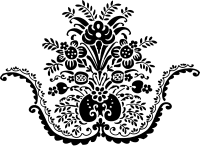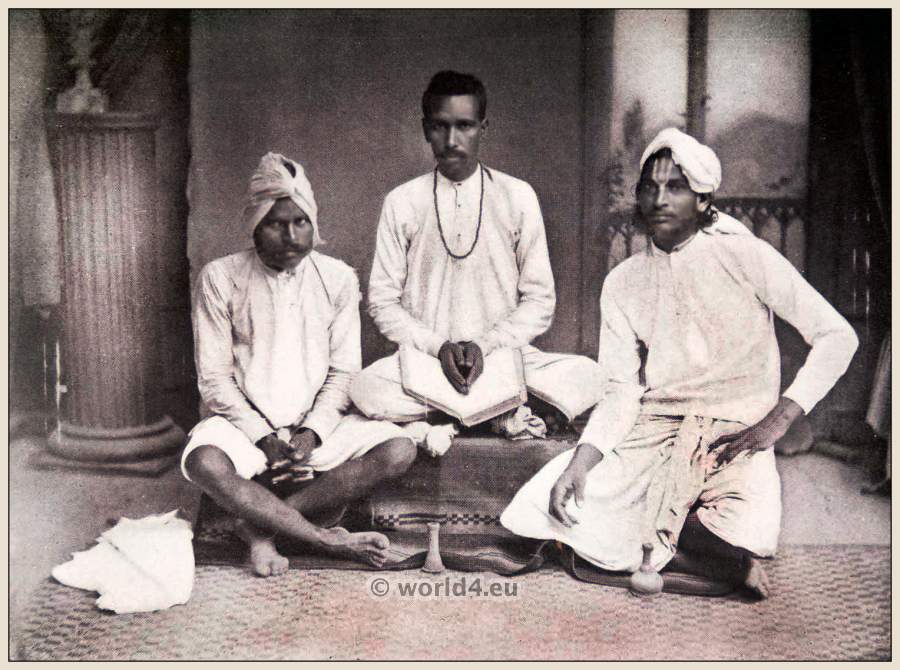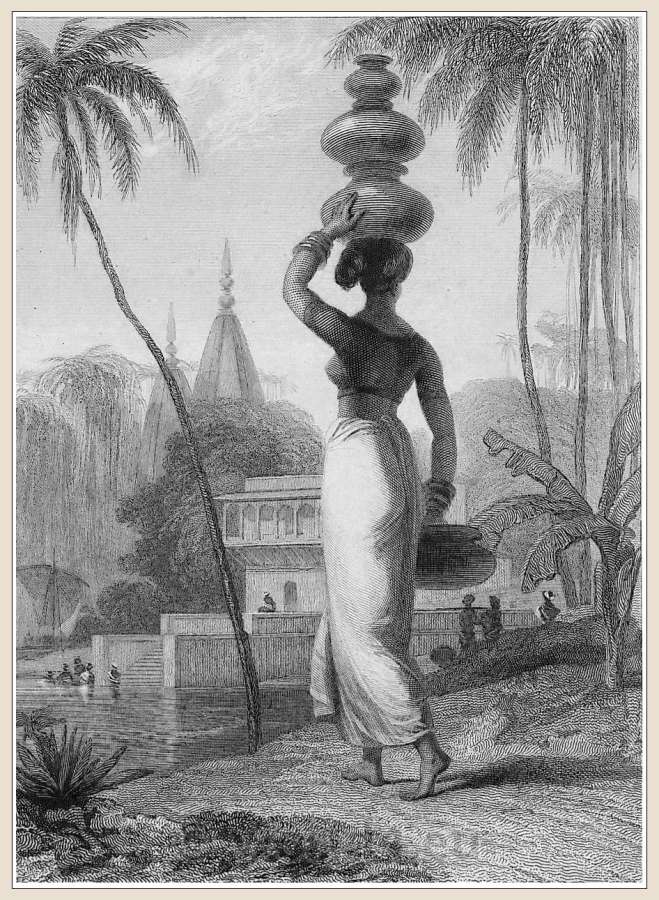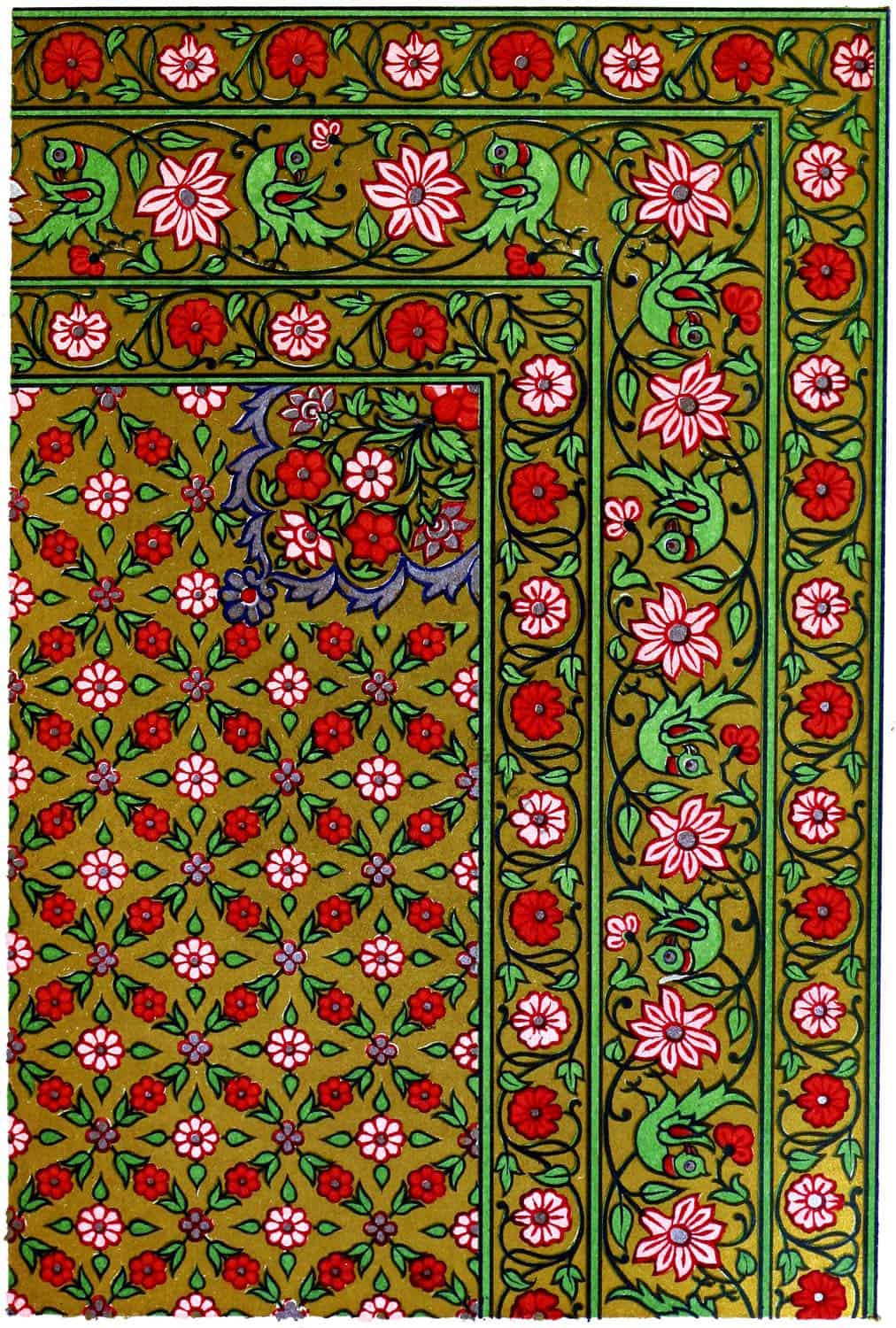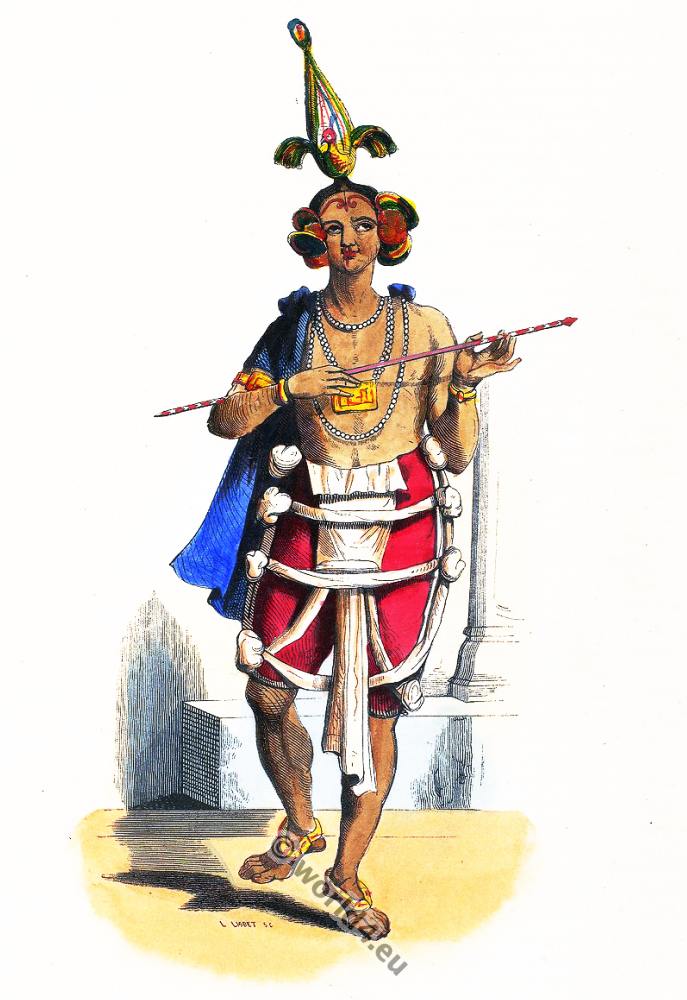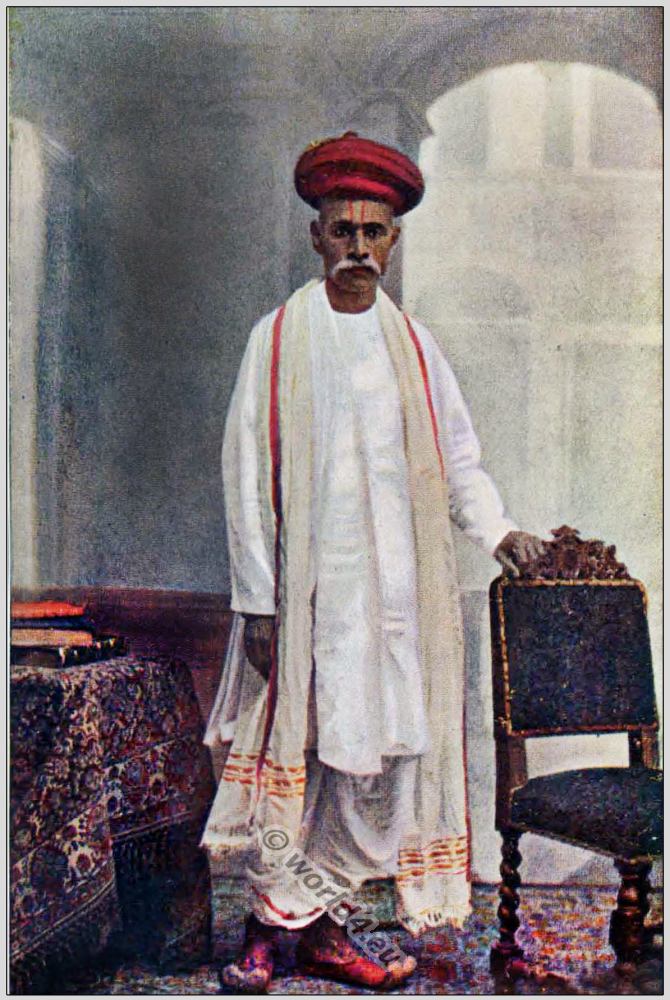Hindu Asamese. The Moamariah.
The term Muttuck (Matak) is generally applied to a sect of the Hindu Asamese properly called Moamariah, who, under a very warlike priest, rose in rebellion, and all but subverted the Asam Government in A. D. 17S4. The Ahom Rajah applied for assistance to the British Government, and troops under a British Officer were sent, by whom the insurrection was quelled, and the Moamariahs were permitted to settle in the tract called Muttuck (Matak).
Moamariahs are not all of the same caste or race; but the majority are Ahoms. The male figure may serve as a good type of an Asamese Hindu. The woman is a fair specimen of the Hindu-Ahom hybrid. The costume is that of a well-to-do Asamese girl. She wears no jacket or bodice, but a scarf of fine silk with embroidered border is lightly wreathed round her bosom, leaving one arm and shoulder bare, as shown in the picture. The lower garment is usually of the drab thicker silk called ‘muga.’
Source: Descriptive Ethnology of Bengal. By Edward Tuite Dalton. Illustrated by lithograph portraits copied from photographs. Contributor: Asiatic Society of Bengal, afterwards Royal Asiatic Society of Bengal. Calcutta 1872.
